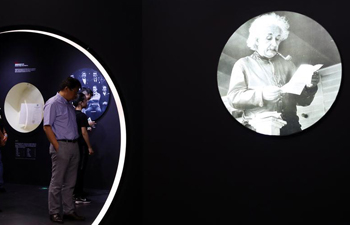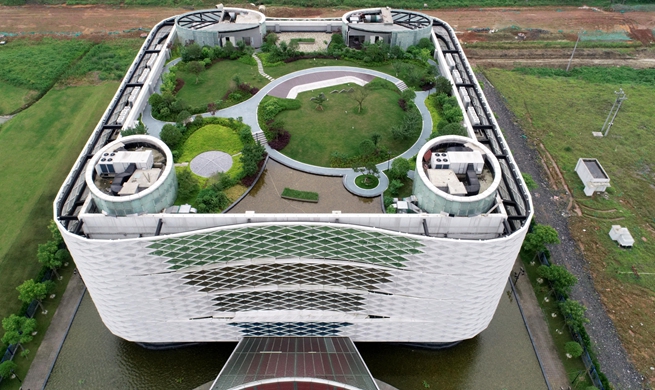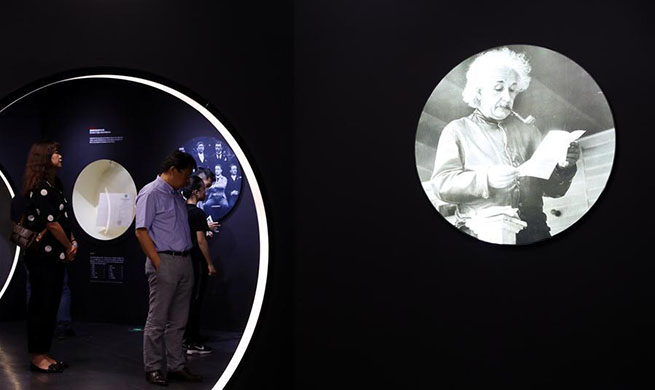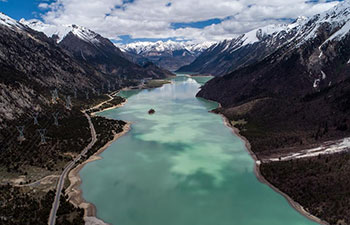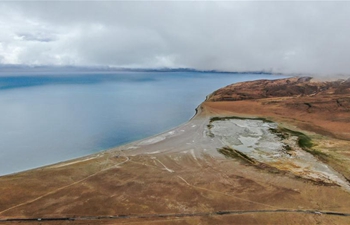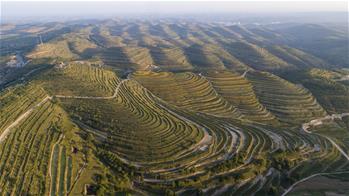By Levi J Parsons
SYDNEY, Aug. 2 (Xinhua) -- Imagine travelling all the way to the southwest corner of Australia to see the famous Pink Lake, only to find it's not pink anymore! That's the problem facing those in the town of Esperance.
The lake was formerly known as Spencer Lake, before the name was changed to Pink Lake. But over the past 10 years or so the strawberry glow has gone, leaving many social media-obsessed tourists less than impressed with the lack of color.
But all that might be about to change, according to Director of Asset Management for the Shire of Esperance Matthew Walker.
"There have been a lot of discussions in the community about changing the name of Pink Lake, because obviously it's not pink anymore," he told Xinhua.
"So from that we thought, maybe it's possible to try and restore that pink hue in the lake and see if it's feasible."
After contacting a group of local environmental scientists, the team are currently undertaking a study to determine whether it can be done.
One of those scientists, Tilo Massenbauer, told Xinhua that he believes transforming the 1,000-hectare lake to its former fuchsia glory is possible.
"The pink lake is caused by an antioxidant called beta carotene which is produced by the organism algae," he explained.
"So what we have with the Esperance Pink Lake is just the algae remaining."
"The organism is still there but the salt concentrations over the past 30 years have reduced to a point where they're not producing that beta carotene in a high enough concentration to make it look pink anymore."
According to Massenbauer, the salinity levels have been diluted over time due to a number of reasons, mainly to do with extreme rainfall events, land clearing and development for agriculture.
"We have also had salt mining for around a 100 year period but that really geared up in the mid 1980's through to 2007 and there may have been some over-extraction of salt out of the lake," he said.
"The other factor that we have is that there have been some alterations to the natural water flow of the lake (due to agriculture)."
"But from an engineering perspective, all we need is to find another salt source and add it to the lake if we want the existing algae to increase to a high enough concentration that it will begin to show that beta carotene, so we get that pink hue."
"It just comes down to how much salt, how far that salt would have to travel to get into that lake, how long it would take to build up those concentrations... and we're starting to tie down some of those numbers."
As well as being a major draw card for the international tourism industry, the Pink Lake has also been historically important to the local Aboriginal people, with a number of sacred Dreamtime stories inspired by the mysterious color of the waterway.
While pink and colored lakes are not entirely uncommon in Down Under, there are no other known cases in Australia or anywhere in the world where a similar recovery, rehabilitation or restoration project has ever been attempted.
"It's all about the economics of it. The economics at the end of the day will determine if we take this further," Walker said.
"But we are seriously considering this otherwise we wouldn't have undertaken the study."
